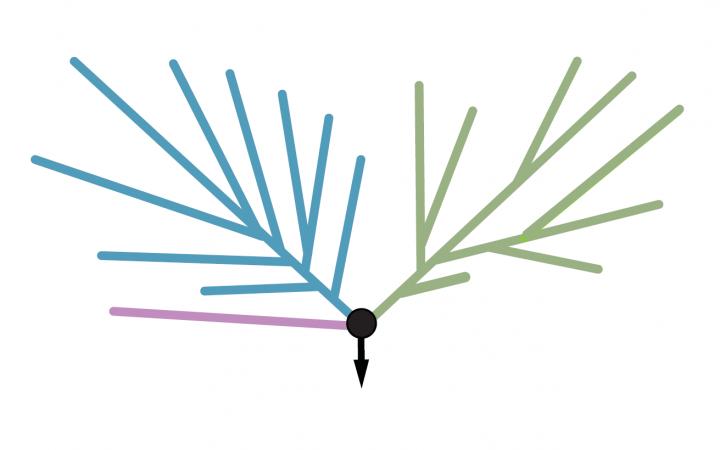
Credit: The University of Queensland
Scientists now better understand early bacterial evolution, thanks to new research featuring University of Queensland researchers.
Bacteria comprise a very diverse domain of single-celled organisms that are thought to have evolved from a common ancestor that lived more than three billion years ago.
Professor Phil Hugenholtz, from the Australian Centre for Ecogenomics in UQ’s School of Chemistry and Molecular Biosciences, said the root of the bacterial tree, which would reveal the nature of the last common ancestor, is not agreed upon.
“There’s great debate about the root of this bacterial tree of life and indeed whether bacterial evolution should even be described as a tree has been contested,” Professor Hugenholtz said.
“This is in large part because genes are not just shared ‘vertically’ from parents to offspring, but also ‘horizontally’ between distant family members.
“We’ve all inherited certain traits from our parents, but imagine going to a family BBQ and suddenly inheriting your third cousin’s red hair.
“As baffling as it sounds, that’s exactly what happens in the bacterial world, as bacteria can frequently transfer and reconfigure genes horizontally across populations quite easily.
“This might be useful for bacteria but makes it challenging to reconstruct bacterial evolution.”
For the bacterial world, many researchers have suggested throwing the ‘tree of life’ concept out the window and replacing it with a network that reflects horizontal movement of genes.
“However, by integrating vertical and horizontal gene transmission, we found that bacterial genes travel vertically most of the time – on average two-thirds of the time – suggesting that a tree is still an apt representation of bacterial evolution,” Professor Hugenholtz said.
“The analysis also revealed that the root of the tree lies between two supergroups of bacteria, those with one cell membrane and those with two.
“Their common ancestor was already complex, predicted to have two membranes, the ability to swim, sense its environment, and defend itself against viruses.”
The University of Bristol’s Dr Tom Williams said this fact led to another big question.
“Given the common ancestor of all living bacteria already had two membranes, we now need to understand how did single-membrane cells evolve from double-membraned cells, and whether this occurred once or on multiple occasions,” Dr Williams said.
“We believe that our approach to integrating vertical and horizontal gene transmission will answer these and many other open questions in evolutionary biology.”
The research was a collaboration between UQ, the University of Bristol in the UK, Eötvös Loránd University in Hungary, and NIOZ in the Netherlands, and has been published in Science (DOI: 10.1126/science.abe5011).
###
Media Contact
Professor Phil Hugenholtz
[email protected]
Original Source
https:/
Related Journal Article
http://dx.




